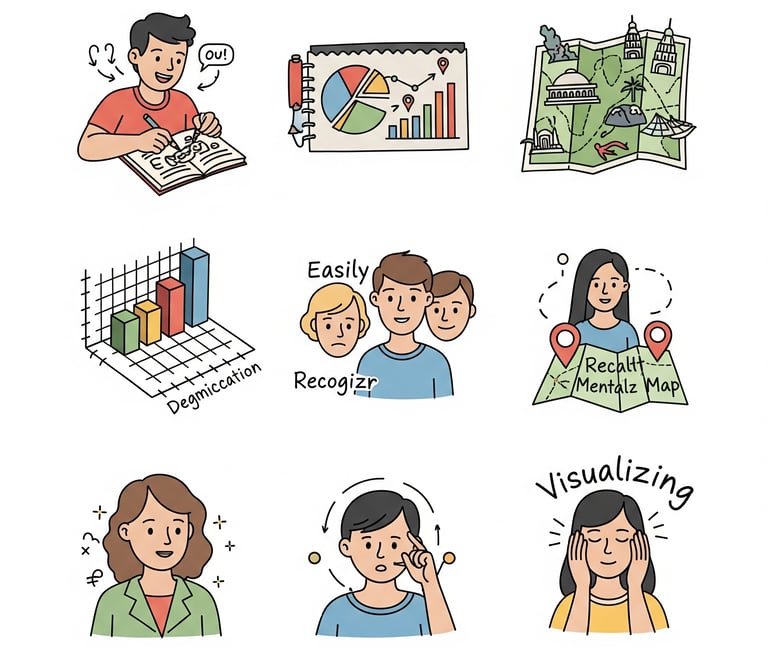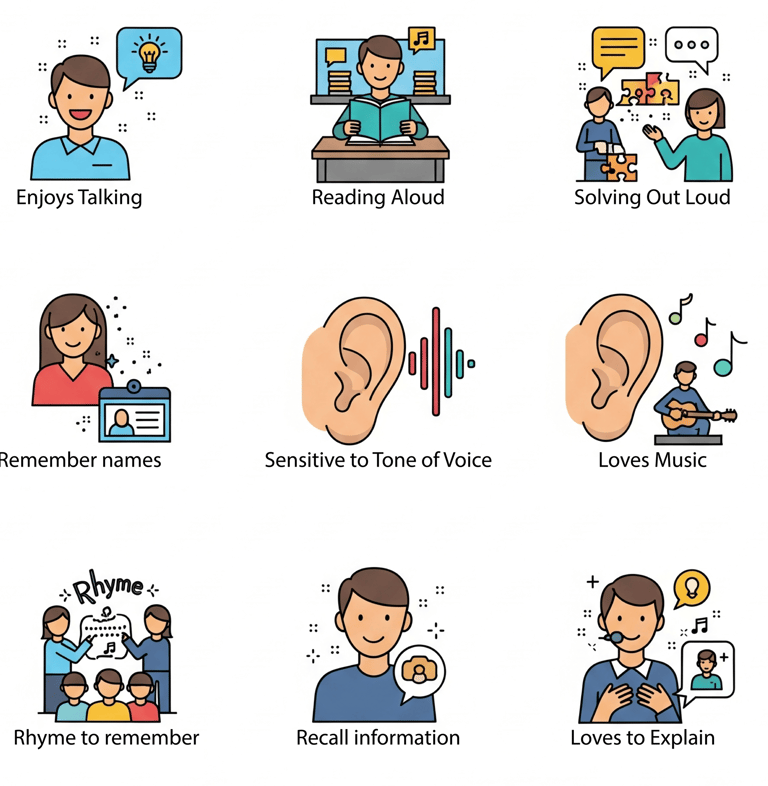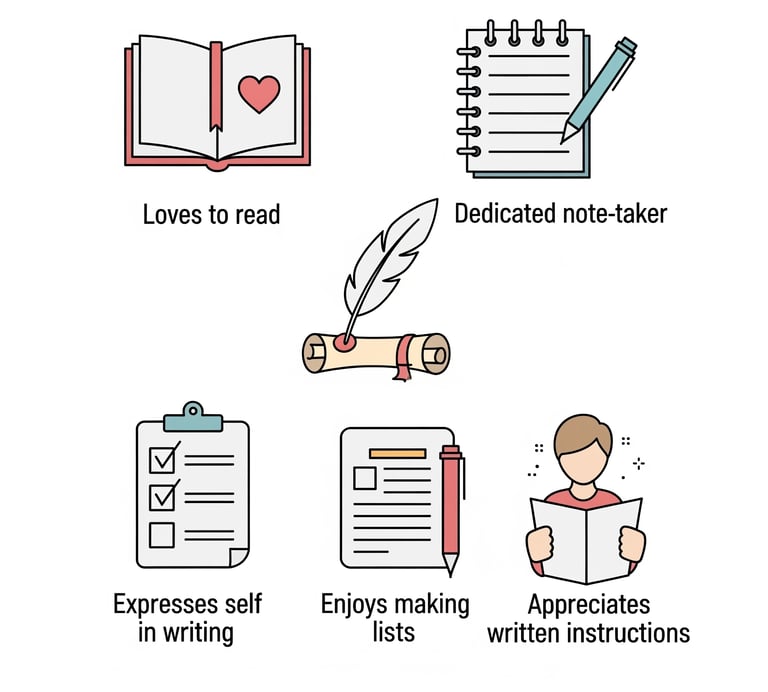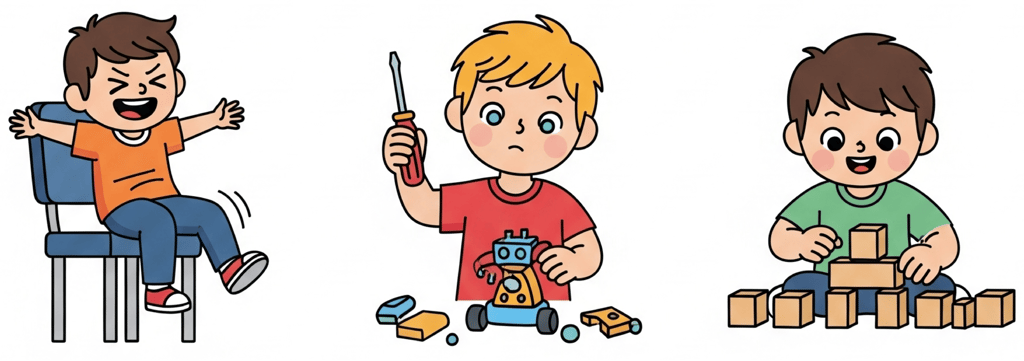The VARK Model: A Guide for Teachers in Oman
Put theory into practice. Our guide to the VARK model gives you simple, actionable tips to support every type of learner: Visual, Auditory, Reading/Writing, and Kinesthetic.
By Mohamed ELMogey, Founder & Lead Educational Consultant of STEAM Leaders Oman.
In our last article, we explored the concept of learning styles—the idea that every child has a unique preference for how they learn. Now, it's time to get practical. How can we identify and support these different styles in our homes and classrooms?
One of the most straightforward and effective tools for this is the VARK model. Created by educator Neil Fleming, VARK is an acronym that stands for the four primary ways people learn: Visual, Auditory, Reading/Writing, and Kinesthetic.
Think of the VARK model not as a rigid test that assigns a permanent label, but as a guidebook. It helps us understand a child's dominant learning preference so we can provide them with strategies and activities that truly resonate. Let's take a deep dive into each of the four styles, with practical examples you can start using today.
The Visual (V) Learner: "Show me."
Visual learners understand the world by seeing it. They rely on visual cues to process and remember information. They often have vivid imaginations and can easily picture things in their minds.








Signs of a Visual Learner:
They are avid doodlers and may draw on notebooks and worksheets.
They love charts, maps, and graphs.
They remember faces and places but might forget names.
They prefer to see a demonstration rather than just hear instructions.
They often close their eyes to visualize something they're trying to remember.
Strategies for Parents:
Use Visual Schedules: For daily routines or chores, create a simple chart with pictures or symbols.
Draw It Out: When explaining a concept, grab a piece of paper and draw it. It doesn’t have to be a work of art! Simple stick figures and shapes work wonders.
Watch Educational Videos: Use online resources to find short, engaging videos that explain topics from science to history.
Lead with the Manual: When building a toy, let them take the lead with the picture-based instruction booklet.
Strategies for Teachers:
Utilize the Whiteboard: Make extensive use of diagrams, mind maps, and flowcharts.
Color-Code Everything: Use different colored markers or highlighters to group related ideas.
Provide Visual Handouts: Ensure your worksheets and notes are well-organized with clear headings and space.
Use Robotics & Building Kits: Kits like Makeblock are fantastic for visual learners, as they can see how different mechanical parts fit and work together.
The Auditory (A) Learner: "Tell me."
Auditory learners process information best when they hear it. They are often great listeners and can easily remember information that was presented orally.
The Multimodal Conclusion: We Are All a Mix
While one style might be dominant, almost everyone is a mix of all four—we are "multimodal." The goal of using the VARK model isn't to rigidly label a child as "just a visual learner." The goal is to understand their primary strength so you can use it as a gateway to learning, and then gently encourage them to build skills in the other areas.
By creating a rich learning environment that speaks to all the VARK styles, you give every child the best possible chance to connect with the material, build their confidence, and discover that learning can be a joyful and exciting adventure.
Putting Theory into Practice: The STEAM Leaders Approach
Understanding learning styles is the first step, but creating an environment where every student can flourish is what truly matters. At STEAM Leaders Oman, this philosophy is at the very core of our after-school programs.
We know that a truly rich learning environment isn't about teaching one way; it's about providing multiple pathways to success for every child. Our hands-on projects with robotics, coding, and design naturally engage Kinesthetic and Visual learners, allowing them to build and see their ideas come to life. Our collaborative challenges and group presentations empower Auditory learners to talk through problems and share solutions. And our guided instructions and creative prompts give Reading/Writing learners the structure they need to excel.
By intentionally blending these approaches, we don't just teach STEM; we create a dynamic and supportive space where every child can engage with new concepts, discover their unique strengths, and build unshakable confidence in their ability to learn.
Signs of an Auditory Learner:
They enjoy talking and are good at explaining their ideas out loud.
They might read aloud to themselves or talk through a problem.
They can remember names easily but might forget faces.
They are sensitive to tone of voice and can be easily distracted by background noise.
They love music and often use rhymes or jingles to remember things.
Strategies for Parents:
Talk It Through: When solving a math problem or tackling a challenge, talk through the steps out loud together.
Use Audiobooks: For storytime, supplement physical books with audiobooks to let them immerse themselves in the sound of the narrative.
Have Them Teach You: After they learn something new, ask them to explain it back to you in their own words. The act of saying it solidifies their understanding.
Create Silly Songs: Turn a list of things to memorize (like the planets) into a fun, catchy song.
Strategies for Teachers:
Encourage Discussion: Use Socratic seminars, debates, and group discussions where students can voice their opinions and learn from their peers.
Allow for Recordings: Let students record lectures on a phone or device so they can listen back later.
Read Aloud: Read instructions and important passages out loud to the class.
Use Mnemonics: Create acronyms or clever phrases to help students remember key information.
The Reading/Writing (R) Learner: "Let me write it down."
Reading/Writing learners thrive on the written word. They prefer to interact with information by reading texts and writing notes. They are often organized and articulate.
Signs of a Reading/Writing Learner:
They love to read books, articles, and websites.
They are dedicated note-takers, often with detailed lists and headings.
They express themselves better in writing than in conversation.
They enjoy making lists, agendas, and definitions.
They appreciate clear, written instructions for assignments.
Strategies for Parents:
Encourage Journaling: Provide a notebook for them to write down their thoughts, stories, or things they learned during the day.
Write It Down: Use sticky notes for reminders. When they ask a question, look up the answer online and read about it together.
Make Lists: Involve them in writing the weekly grocery list or a to-do list for a family project.
Communicate Through Text: For older children, a well-written text message or email can often be more effective than a verbal reminder.
Strategies for Teachers:
Provide Comprehensive Handouts: Offer detailed notes, glossaries, and written summaries of your lectures.
Assign Written Projects: These students excel at traditional assignments like essays, book reports, and research papers.
Give Time for Reading: Allow quiet time in class for students to read and process information from textbooks.
Use Annotation: Teach them how to actively engage with a text by highlighting, underlining, and writing notes in the margins.
The Kinesthetic (K) Learner: "Let me do it."
Kinesthetic learners, also called tactile learners, learn by doing, moving, and touching. They are the most hands-on of all the learners and need to physically experience something to understand it.
Signs of a Kinesthetic Learner:
They have a hard time sitting still and often fidget or tap their feet.
They love to take things apart and see how they work.
They learn best through hands-on activities, experiments, and role-playing.
They use gestures and body language when they talk.
They have great coordination and often excel in sports or crafts.
Strategies for Parents:
Turn Learning into a Game: Practice spelling words by writing them with chalk on the sidewalk or arranging letter magnets.
Build Everything: When learning about shapes, build them with toothpicks and marshmallows. When learning about history, build a model of a castle.
Allow for Movement: Let them pace around the room while memorizing facts. Squeezing a stress ball can also help them focus.
Get into Robotics: A robotics kit is the ultimate toy for a kinesthetic learner. They can build, tinker, and see the immediate physical result of their coding efforts.
Strategies for Teachers:
Prioritize Experiments: Science class is a natural fit. Conduct as many hands-on experiments as possible.
Use Role-Playing: Act out historical events or scenes from a novel.
Allow for Movement Breaks: Incorporate short, active breaks to help students get their wiggles out and reset their focus.
Field Trips: Take learning outside the classroom walls whenever possible.


